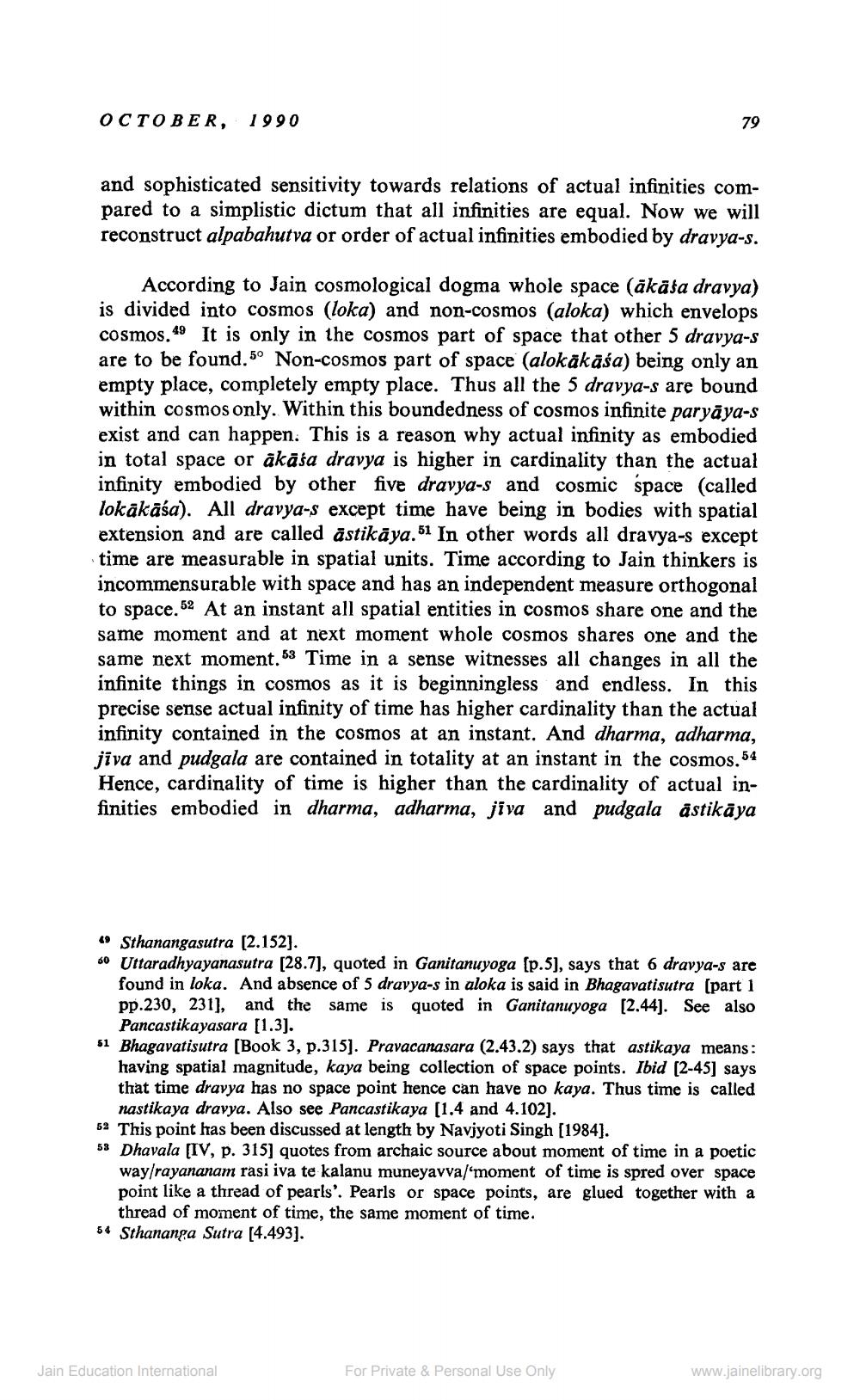________________
OCTOBER, 1990
79
and sophisticated sensitivity towards relations of actual infinities compared to a simplistic dictum that all infinities are equal. Now we will reconstruct alpabahutva or order of actual infinities embodied by dravya-s.
According to Jain cosmological dogma whole space (äkāta dravya) is divided into cosmos (loka) and non-cosmos (aloka) which envelops cosmos. 49 It is only in the cosmos part of space that other 5 dravva-s are to be found.59 Non-cosmos part of space (alokākāśa) being only an empty place, completely empty place. Thus all the 5 dravya-s are bound within cosmos only. Within this boundedness of cosmos infinite paryaya-s exist and can happen. This is a reason why actual infinity as embodied in total space or ākāśa dravya is higher in cardinality than the actual infinity embodied by other five dravya-s and cosmic space (called lokākāśa). All dravya-s except time have being in bodies with spatial extension and are called ästikāya.51 In other words all dravya-s except time are measurable in spatial units. Time according to Jain thinkers is incommensurable with space and has an independent measure orthogonal to space.52 At an instant all spatial entities in cosmos share one and the same moment and at next moment whole cosmos shares one and the same next moment. 53 Time in a sense witnesses all changes in all the infinite things in cosmos as it is beginningless and endless. In this precise sense actual infinity of time has higher cardinality than the actual infinity contained in the cosmos at an instant. And dharma, adharma, jiva and pudgala are contained in totality at an instant in the cosmos. 54 Hence, cardinality of time is higher than the cardinality of actual infinities embodied in dharma, adharma, jiva and pudgala åstikāya
« Sthanangasutra (2.152). 60 Uttaradhyayanasutra [28.7), quoted in Ganitanuyoga (p.5), says that 6 dravya-s are
found in loka. And absence of 5 dravya-s in aloka is said in Bhagavatisutra (part 1 pp.230, 231), and the same is quoted in Ganitanuyoga (2.44). See also
Pancastikayasara (1.3). 51 Bhagavatisutra (Book 3, p.315). Pravacanasara (2.43.2) says that astikaya means:
having spatial magnitude, kaya being collection of space points. Ibid (2-45] says that time dravya has no space point hence can have no kaya. Thus time is called
nastikaya dravya. Also see Pancastikaya (1.4 and 4.102). 62 This point has been discussed at length by Navjyoti Singh (1984). 53 Dhavala (IV, p. 315] quotes from archaic source about moment of time in a poetic
way/rayananam rasi iva te kalanu muneyavva/'moment of time is spred over space point like a thread of pearls'. Pearls or space points, are glued together with a
thread of moment of time, the same moment of time. 54 Sthananga Sutra [4.493].
Jain Education International
For Private & Personal Use Only
www.jainelibrary.org




